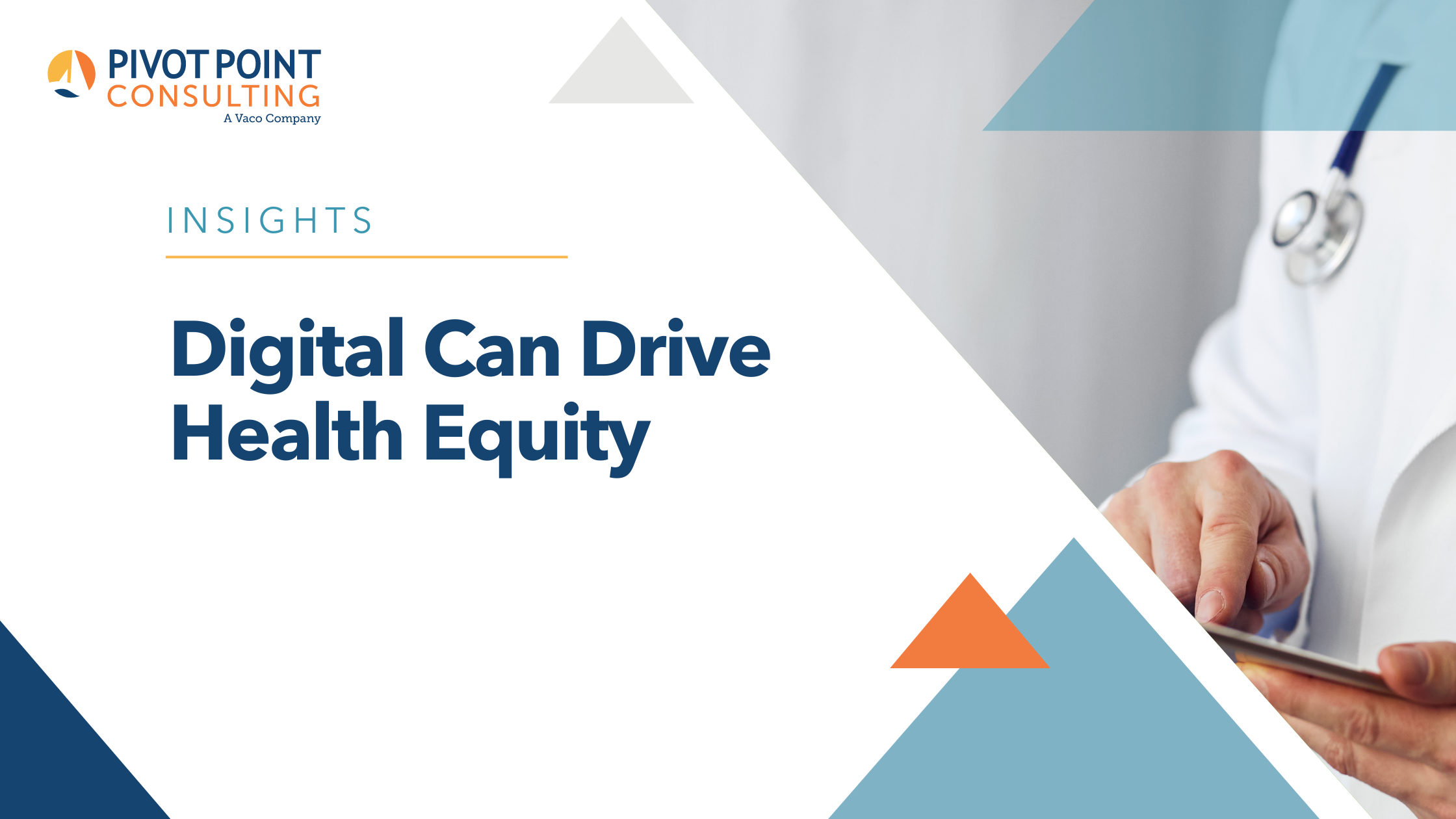The COVID-19 pandemic exposed the fragilities of the US healthcare system–from antiquated public health data infrastructure to staffing shortages impacting patient care and exacerbating burnout in caregivers.
Disparities in Health Care and Services
The pandemic also laid bare another endemic. Disparities in health care and services based on race, ethnicity, sexual orientation, financial status and other factors remains high. For example, data from early in the pandemic showed revealed Black people accounted for 39% of COVID-19 related deaths, but are just 15% of the population. Similarly, a 2022 NIH study shows respondents who earn less than $25,000 per year were more likely to suspect to have COVID-19, be told they have Covid‐19 and test positive for the illness, but were less likely to receive a test.
These inequities persist well beyond care and services for COVID-19. In the past few years, there has been a groundswell of effort to address disparities in health and healthcare and provide equitable care and services across populations. Virtually every healthcare organization and association has woven health equity into their mission and messaging.
The Role of Technology in Health Equity
Without question, technology can and should play a role in health equity. Digital health tools such as patient portals, mobile health apps, remote patient monitoring and video visits/telehealth can improve equity. This is accomplished through improving access to health care and services and fostering personalized “whole person” care. Additionally, it includes delivering these services in the context of history and community to foster trust.
A recent jointly published by Ipsos and HLTH describes health techquity as the strategic design, development and deployment of technology to advance health equity, noting, “It encompasses the notion that technology can either support or inhibit advancements in health equity if not implemented in an intentional and inclusive manner.”
There are innumerable proven use cases of the value of digital technology in healthcare. There is also data revealing access and use of health technologies is inequitably distributed among the affluent. Not surprisingly, digital health investments are also skewed.
Inequities in Digital Health Investments
Data from McKinsey shows venture funding for digital health companies reached a record $29.1 billion in 2021. Roughly $550M of that funding is for companies targeting social determinants of health (SDOH) and underserved populations. While $550M is significant, it represents less than 2% of the funding. Such inequities exist not just in apps and device investments. Clinical research and analytics have suffered due to limited, poor or incorrect representation of populations in healthcare data or algorithms.
We have much work ahead of us–and it’s not about more apps or more investment or more targeted algorithms. Seismic shifts in communication, culture and trust are the lynchpins of techquity.
Insights from Research
For example, a recent JAMIA study found that, in 2019 and 2020, Black and Hispanic individuals were offered and accessed patient portals at significantly lower rates than white individuals. This is even after accounting for other factors that may drive digital engagement. However, portal use by those who reported being offered a portal was consistent across demographics. This suggests differences in access were likely driven by disparities in being offered a portal.
This same study found individuals offered a patient portal and encouraged to use it by their healthcare provider were 21% more likely to access their portal. This is in comparison to those who did not receive provider encouragement. There was no meaningful difference in the effect of encouragement across racial/ethnic groups. These data underscore the vital human aspect of techquity–the voice of care providers and staff remains essential.
Finally, while viewing rates of portal data were consistent among racial and ethnic groups, Black and Hispanic individuals who were offered and accessed a portal were 12% more likely than white individuals to use it to download or transmit information. Understanding the “why” behind this data will be important to affect long-term change. Regardless, this does speak to the utility of data access and transmission for these patients–once they have access to it.
Health Equity and How We Can Promote It
If techquity is about access to tools and data and how we connect with patients, how do we promote it?
First, it’s awareness and coaching–we need to surface and actively discuss systemic biases during employee training on digital technologies. We can go further by positioning our organizations and staff ambassadors for health equity. For example, a simple nudge from a provider to access the portal, clear sign-up instructions in a variety of languages, building online access and workflows for handicap populations who might be power users of healthcare services and a patient portal support desk with skilled, culturally sensitive staff are essential.
Second, meeting patients “where they are” is a proven, vital component of techquity. Countless studies have found that within Black communities, local churches and clergy as trusted conduits of healthcare information.15 Digital innovators and health systems must collaborate and engage with communities via social media, neighborhood centers, schools, nurse navigators and local congregations.
If there is a silver lining in the devastating cloud of COVID-19, it’s how the pandemic ignited healthcare providers, payers and digital health developers to innovate and mobilize as never thought possible–with health equity being a key driver. We now have the tools, platforms and increasingly, the analytics, to serve as the foundation for techquity. As leaders in this field, we must–intentionally and inclusively–also address the people and processes to establish and sustain health equity.


